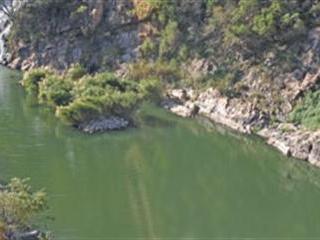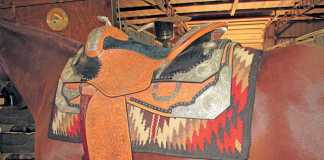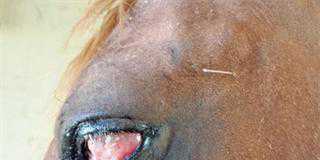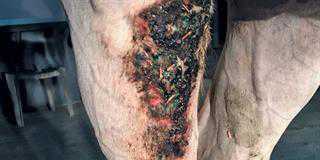
Horses often drink from farm dams and vleis, or stagnant rivers and streams. If the water is contaminated with runoff from the stables or manure in the pastures, the nitrate and phosphate content can result in rapid growth of cyanobacteria, or blue-green algae. It can even grow in water troughs in pastures that aren’t kept clean.
There are more than 2 000 species of blue-green algae, and at least 80 are poisonous. In SA the species mainly responsible for the death of livestock, wildlife and wild birds is Microcystis aeruginosa, and more than 65 ‘microcystins’, the toxins found in this species of algae have been isolated to date. Although blue-green algae poisoning is a well-known cause of liver failure and death in livestock, many horse owners aren’t aware that horses are equally susceptible.
As the name suggests, blue-green algae forms a blue-green ‘bloom’ that floats on the surface of the water and looks a little like a splatter of paint. You can’t miss it. What’s not obvious is that the water underneath is also toxic – and Microcystis can also kill fish. Water that’s been pumped out of a contaminated dam and undergone processing and filtration still contains enough toxins to affect animals and humans. Neither is the poison destroyed by boiling the water.
Symptoms
In horses, drinking badly contaminated water can result in death within a few hours, usually as a result of ‘neurotoxins’ that cause muscle tremors, difficulty with breathing, salivation, and diarrhoea. More commonly, the toxins that affect the liver (hepatotoxins) cause a chronic condition. Horses may appear to have biliary as the gums become pale or yellowish.
White markings, particularly on the nose and under the tail, can become inflamed and encrusted. The toxins in the water can also result in eczema in exposed skin when a horse walks through affected water. If your dogs bathe in the polluted water, they can even die as a result of licking themselves clean, as they’ll swallow enough algae to be poisoned.
What to do
If your horses show symptoms, or die, it’s important to contact a vet. A necropsy can confirm the diagnosis and possibly save the lives of other livestock or horses as the suspect dam, stagnant river or vlei can be fenced off. Horses showing symptoms can be treated symptomatically, but those with severe neurological or liver symptoms seldom recover. A vet will monitor the horse clinically for several weeks. If no improvement is shown, it may be necessary to decide on euthanasia for humane reasons.
Prevention is much better than cure. Water movement prevents growth of blue-green algae, so running streams are usually safe. Prevent runoff of manure, urine or fertiliser into dams and vleis. Wash out drinking troughs with chlorine disinfectant or copper sulphate, and rather use borehole water for drinking purposes.
Contact Dr Mac at [email protected]. Please state “Horse talk” in the subject line of your email.













